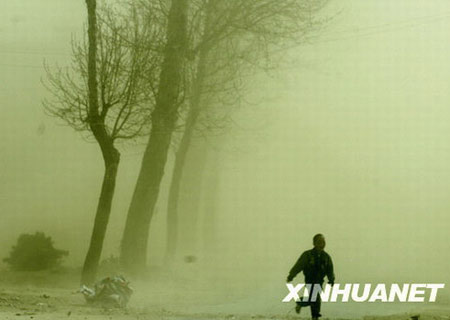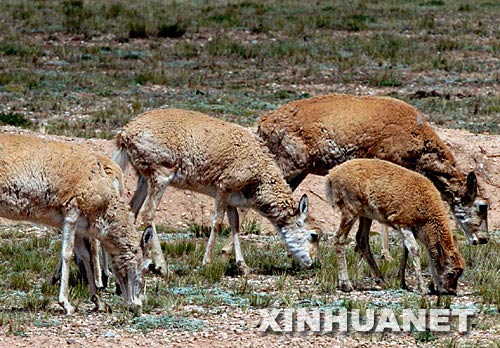China's chief economic planner Friday announced that the country aims to revive the degraded pasture and harness rat pest in Tibet by 2030.
It is the government's latest goal in the fight against global climate change and to protect the ecology of Tibet, which covers more than 1.2 million square kilometers.
The State Council, China's Cabinet, approved Wednesday a plan to protect the environment in southwest Tibet.
|

|
|
Photo taken on Feb. 11 shows a child dodges the blowing sand in Lhasa, capital city of southwest China's Tibet Autonomous Region. Lhasa enters the sand-blowing high frequency period in spring as a sand-blowing hit Lhasa Airport bringing inconvenience to public transport. |
"The plan is of great importance to ramping up ecological protection efforts in Tibet, fighting global warming, ensuring China's ecological safety and safeguarding the economic and social development of Tibet," said the statement from the National Development and Reform Commission (NDRC).
Average temperatures in Tibet rose by 0.32 degrees centigrade every 10 years from 1961 to 2007, quicker than the global and national warming rates, according to the statement.
"The plan also aims at curbing soil erosion, safeguarding biological diversity in Tibet, and promoting the use of clean energy in rural areas," the statement read.
The government would push forward the use of hydropower electricity, methane, and solar power in rural Tibet, according to the statement.
"Projects, including natural grassland protection, forest fire prevention, wetland protection, growing forest shelter belts against gales and storms, pasture protection against desertification, will be carried out," said the statement.
Tibet is famous for its more than 6 million hectares of wetlands.
Local authorities should try to balance ecological protection and economic development. They should make efforts to improve the living conditions and incomes of farmers and herdsmen, according to the NDRC.
A total investment of 8 billion yuan (1.2 billion U.S. dollars) would be earmarked to improve infrastructure, including domestic water mains, electricity, roads, mail and telecommunications for Tibetan farmers and herdsmen in 2009 and 2010, Pu Qiong, deputy director of the NDRC in Tibet, said earlier this month.
The NDRC said the government would allocate special funds for implementing the plan, but gave no details.
|

|
|
Photo taken on Aug. 21, 2007 shows the Tibetan antelopes foreaging on the grassland. |
(Xinhua News Agency February 21, 2009)